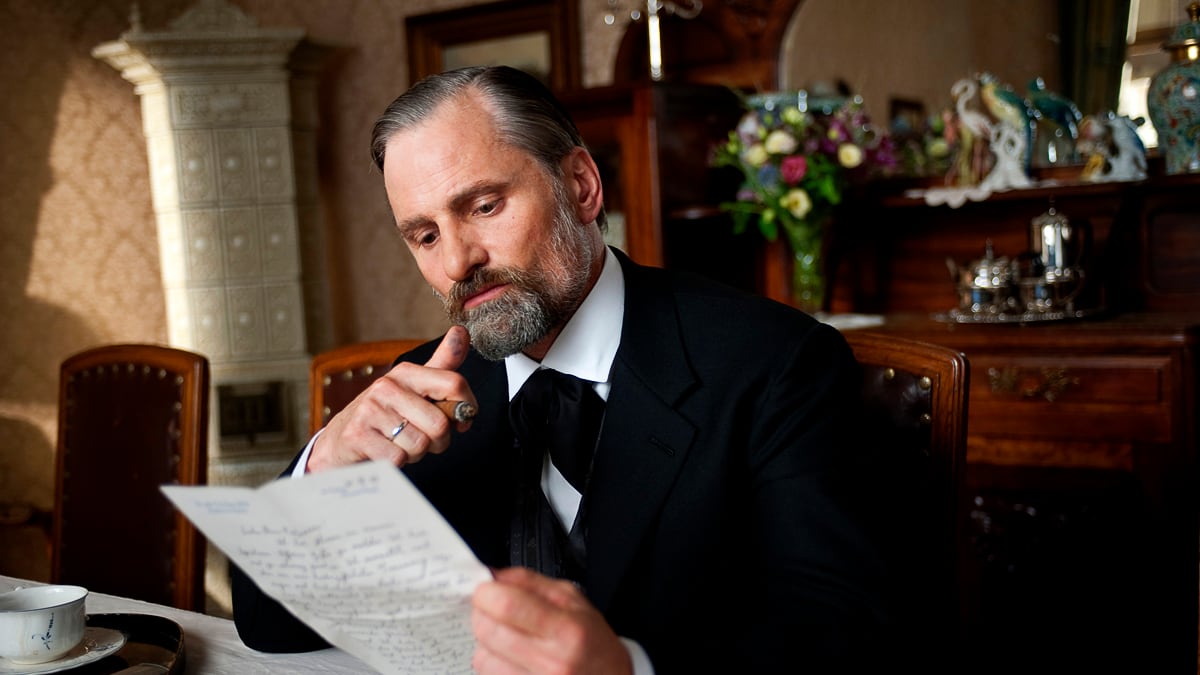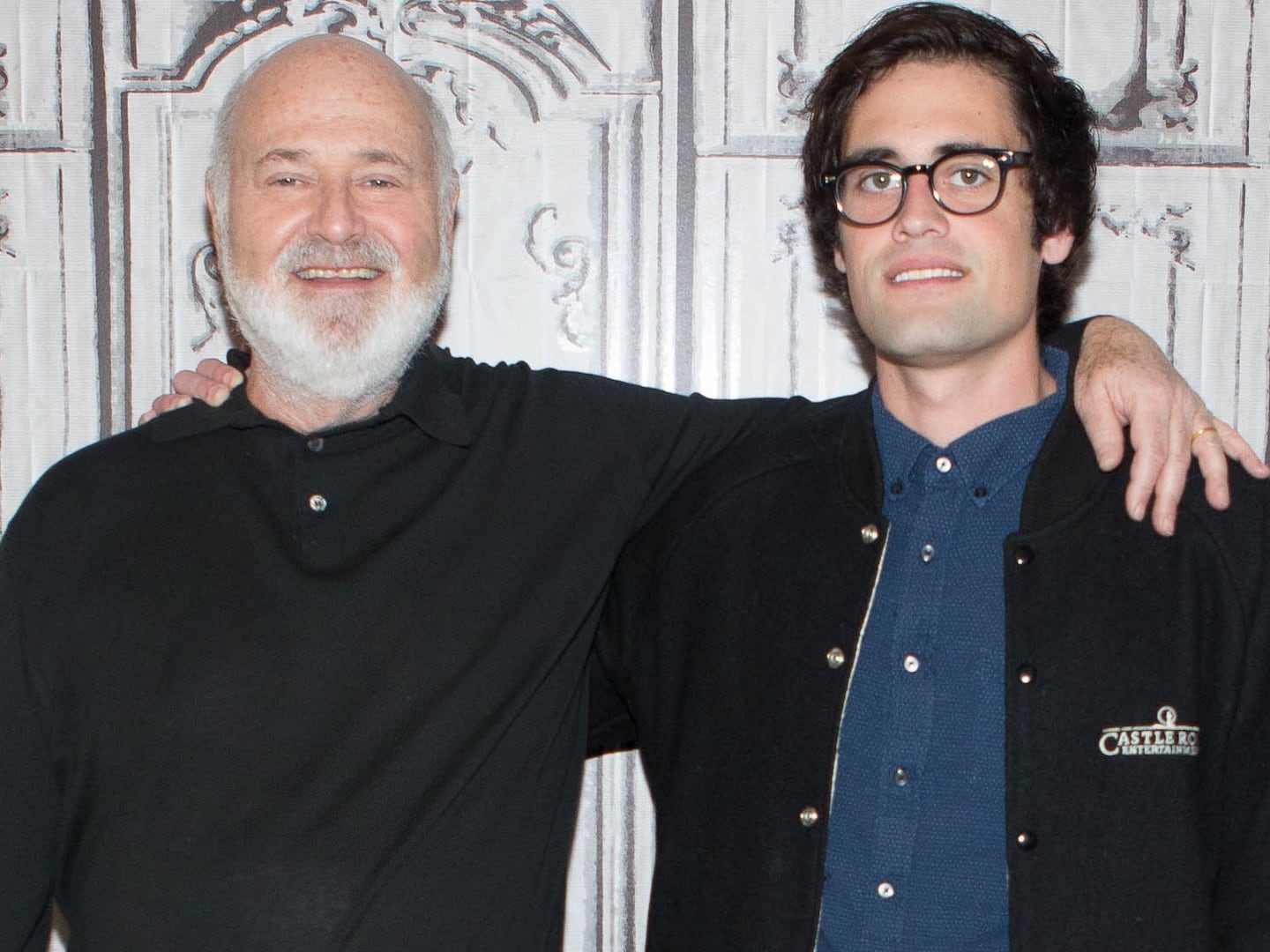Never mind his A-list status, let’s talk onomatopoeia. For most film fans, just saying the words “Viggo Mortensen” inevitably conjures certain images associated with alpha-male action herodom: Viggo wielding a broadsword, valiantly shepherding Hobbits across a treacherous sweep of Middle Earth in the blockbuster Lord of the Rings movie trilogy. Viggo covered in prison tats, issuing a vicious, butt-naked beat-down in the Russian mobster drama Eastern Promises. Maybe even Viggo caked with grime, pushing a rickety shopping cart and battling cannibal zombie-types in the postapocalyptic tear-jerker The Road.
But Viggo as Sigmund Freud?
Portraying the founding father of the talking cure in the psychosexual drama A Dangerous Method (which reaches theaters in limited release today), the Danish-American actor doesn’t so much as swat a fly. Instead, he engages in beetle-browed academic debates and puffs on cigars in book-lined studies, limping through Switzerland on the way to establishing modern psychoanalysis. It raises the question: what kind of role is that for one of filmdom’s most virile and square-of-jaw ass-kickers?
“I thought it was an odd idea too,” Mortensen acknowledged, sipping yerba mate from his personal gourd at the Toronto International Film Festival in September. “Because I had the same notion that everybody has of what Freud looked like: this frail, old, gaunt, white-haired man. Very rigid, formal. With these piercing brown eyes.”
Before you write it off as so much stunt casting, however, the action star delivers in the part, bringing a twinkling undercurrent of humor, charismatic pomposity, and middle-aged heft to A Dangerous Method that’s more in keeping with Mortensen’s true age–53–than with his romper-stomper onscreen body of work to date. Critics agree. “Freud is brought wonderfully to life by Mortensen in a bit of unexpected casting that proves entirely successful,” Todd McCarthy gushed in The Hollywood Reporter after the film’s premiere at the Venice Film Festival.

How Mortensen came to costar in A Dangerous Method is one of those indie-movie Cinderella stories where bad luck, good timing, and a pinch of magical thinking yielded happy results onscreen–with no one happier than the film’s director, David Cronenberg. “Viggo playing Sigmund Freud is not very obvious casting,” the 68-year-old movie rebel recently acknowledged to The Daily Beast, “but I started to think: ‘OK, Freud in this movie is not the old, ailing, cancer-ridden Freud that everyone seems to know. He’s a 50-year-old who’s described in the literature of the period as being handsome, masculine, and humorous. When you think of him in those terms, and that Viggo is exactly that age, it starts to make sense.”
But at the start, his participation was hardly a done deal. Sure, Cronenberg had cast Mortensen in starring parts twice before: as a small-town diner owner who comes into dramatic confrontation with mobsters in Cronenberg’s 2005 crime thriller A History of Violence and as a stoic “cleaner” for the Russian Mafia in 2007’s Eastern Promises (for which Mortensen landed a Best Actor Oscar nomination). But two years later, when the director dangled before Mortensen a role in his adaptation of Christopher Hampton’s acclaimed stage play The Talking Cure, the actor turned him down; Mortensen’s parents were in ill health, requiring him to take a year-and-a-half-long sabbatical to look after them.
In the meantime, Austrian actor Christoph Waltz (of Oscar-winning Inglourious Basterds fame) had been heavily lobbying Cronenberg to portray Freud–regaling the director with stories of how his grandfather had been one of Freud’s pupils–and scored the part. But in one of the more blatant Hollywood dick moves in recent years, when Waltz was offered a lead role in the big-budget adaptation of Water for Elephants, he followed the money and left the modestly budgeted Dangerous Method in the lurch.
With production looming in 2010, Cronenberg went back to Mortensen, whose circumstances had by then changed. “Things had improved with my family,” the actor recalled. “I could go away for a short period. And David managed to condense my schedule so I could shoot everything in three weeks.”
Based on John Kerr’s 1994 biography A Most Dangerous Method: The Story of Jung, Freud and Sabrina Spielrein, both the movie and the play chronicle how Dr. Carl Jung and Sigmund Freud come to bond over their shared advocacy and pioneering work in the field of psychoanalysis during the lead-up to World War I. In a Zurich mental hospital, fledgling psychiatrist Jung (Michael Fassbender in the movie) begins analysis with an unhinged female patient–a Russian gamine with a jutting jaw and fecal fascination–named Sabina Spielrein (Keira Knightley). After his talking cure works wonders, the two begin a torrid affair based around a shared enjoyment of S&M, bondage, and light dominance. Spielrein’s powerful intellect, in turn, compels breakthroughs in Jung’s work (that go totally unacknowledged by him) and later she influences Freud’s notion of Thanatos, the “death instinct,” detailed in his seminal text Beyond the Pleasure Principle. But in transferring her energies as a patient/student from one neurologist to the other, Spielrein also irreparably damages Jung and Freud’s friendship, helping send their treatment methods in radically different directions.
The movie screened at those bellwethers for Oscar viability, the Venice, Telluride, and Toronto International film festivals to generally favorable reviews, with particular praise heaped on Fassbender’s and Mortensen’s performances.
Known for his meticulous preparation–Mortensen went on a near-starvation diet for The Road and immersed himself in Russian culture for Eastern Promises–the actor traveled to Freud’s homes in Vienna (exteriors of that apartment can be seen in A Dangerous Method) and London, as well as the venerable psychiatrist’s birthplace in what is now the Czech Republic. In addition, Mortensen watched old film reels, pored over photographs, and read as many of Freud’s writings and biographies as he could get his hands on. “I love that,” he said. “It’s always what you go to town on. You can always count on a good time in researching a role. Even if the shoot doesn’t turn out to be fun and even if the movie turns out not to be very good, you have what you learned on the way to shooting it.”
Mortensen may look like a Norse god and speak with the Zen cool of a big wave surfer. But he’s still attuned enough to academic discourse to foresee the likelihood that Freudians and Jungians will almost certainly quarrel “almost like sports fans” over the depictions of their respective ideological figureheads in A Dangerous Method, which the actor waves away as so much hair splitting. “I’m sure they can watch this movie and go, ‘Yeah!’ when Jung gets a point across. Or they can feel things aren’t fair. ‘That’s not Freud. No!’ But it’s kind of beside the point,” Mortensen said.
“The idea of confession without judgment and helping through love–love being listening–is essentially what both Jung and Freud were talking about,” he continued. “And whether it’s a psychoanalyst, a director, a parent, or a friend who listens, that’s one of the greatest gifts you can give. To just listen.”






